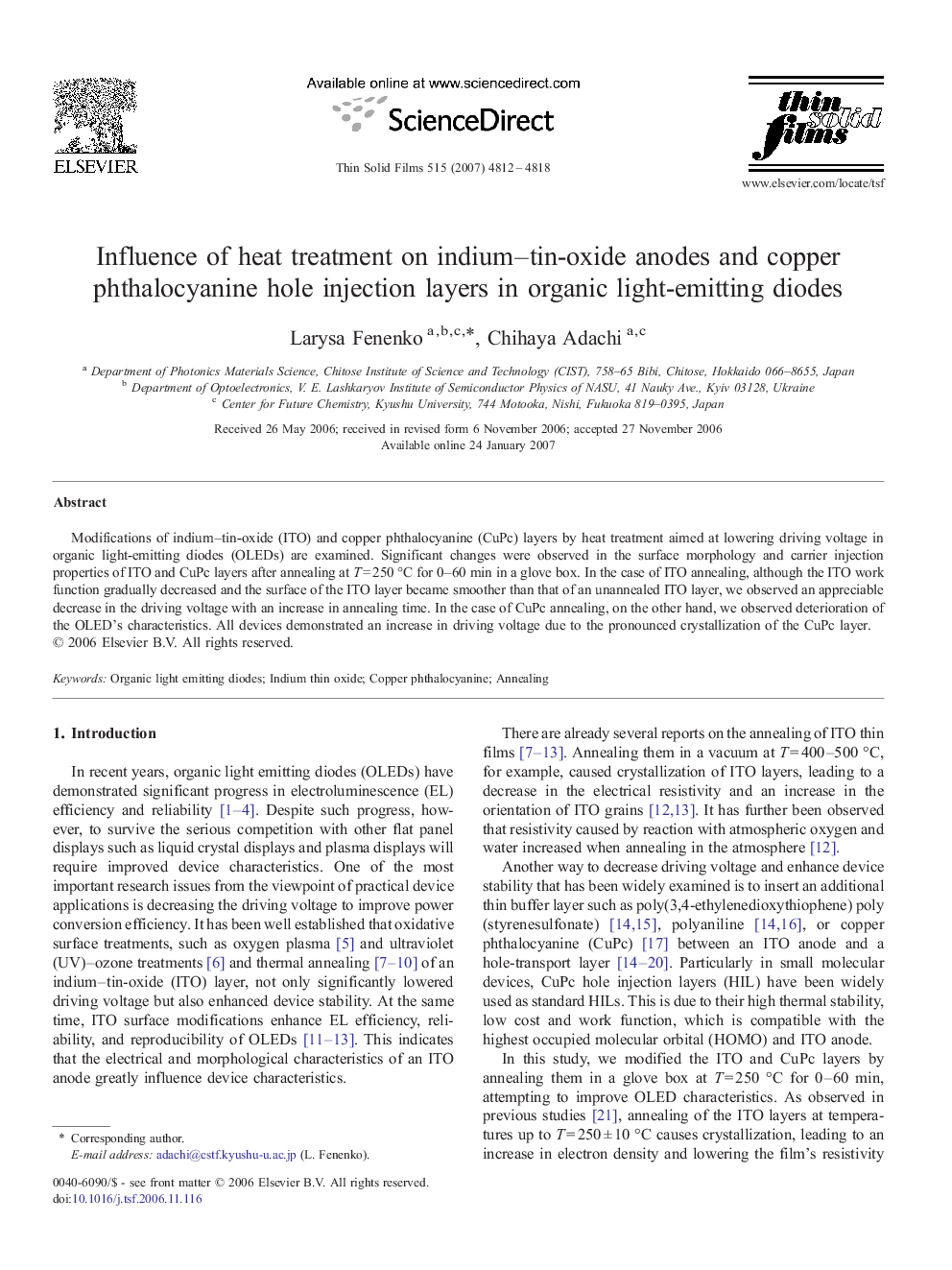| Article ID | Journal | Published Year | Pages | File Type |
|---|---|---|---|---|
| 1676473 | Thin Solid Films | 2007 | 7 Pages |
Modifications of indium–tin-oxide (ITO) and copper phthalocyanine (CuPc) layers by heat treatment aimed at lowering driving voltage in organic light-emitting diodes (OLEDs) are examined. Significant changes were observed in the surface morphology and carrier injection properties of ITO and CuPc layers after annealing at T = 250 °C for 0–60 min in a glove box. In the case of ITO annealing, although the ITO work function gradually decreased and the surface of the ITO layer became smoother than that of an unannealed ITO layer, we observed an appreciable decrease in the driving voltage with an increase in annealing time. In the case of CuPc annealing, on the other hand, we observed deterioration of the OLED's characteristics. All devices demonstrated an increase in driving voltage due to the pronounced crystallization of the CuPc layer.
